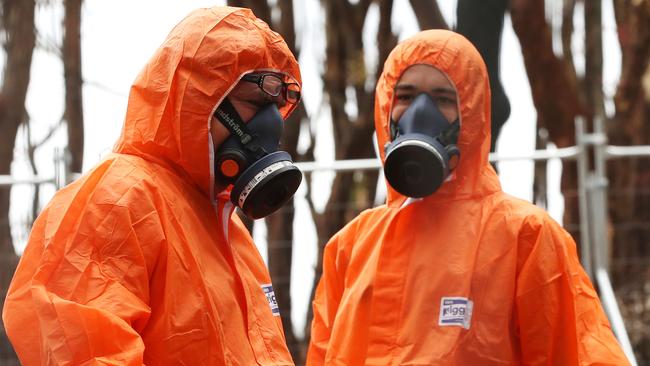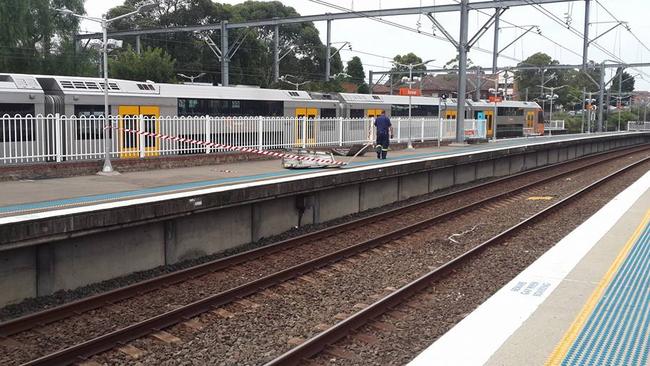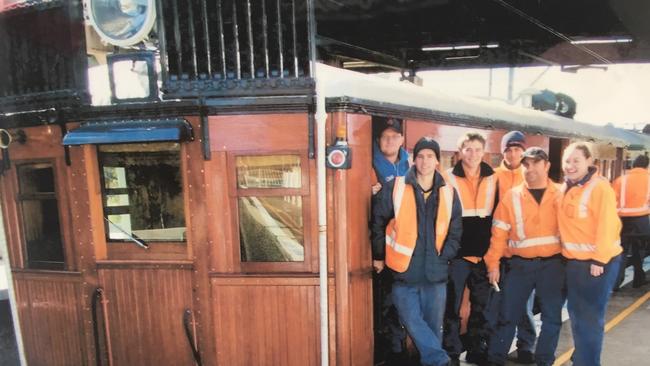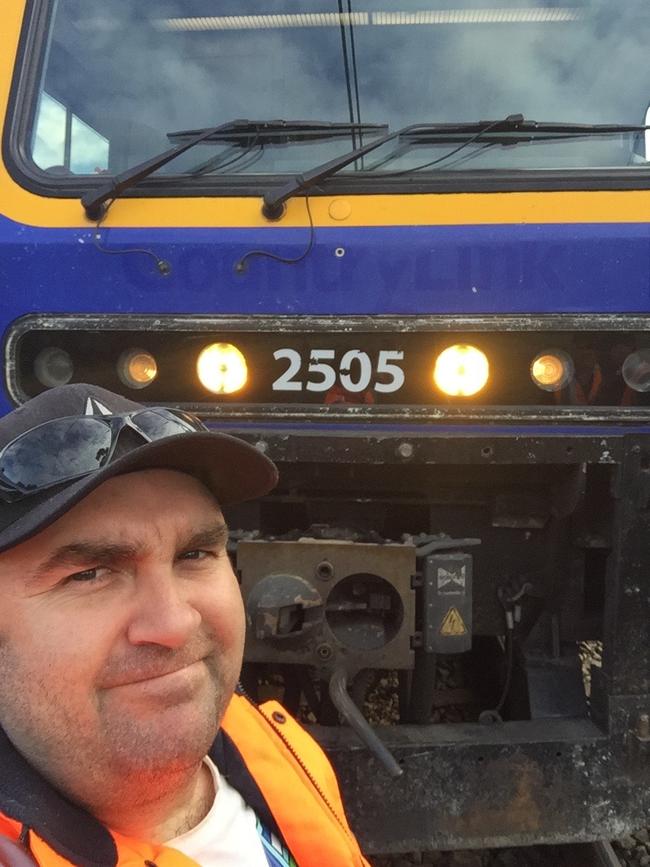Asbestos at Sydney train stations: Calls for register after Transport NSW scare
A spate of rail workers have come into contact with the potentially deadly fibre, authorities claim. See if your station is affected.
NSW
Don't miss out on the headlines from NSW. Followed categories will be added to My News.
Health and union officials are calling on the state government to set up an online database listing the locations of train stations containing asbestos after several workers came into contact with the deadly fibre.
The head of Australia’s federal asbestos safety and eradication agency said current Hazardous Materials Registers are often outdated and lack critical detail.
“The problem with Transport NSW is access, quality and detail. HMRs are not asbestos registers specifically and the quality and consistency varies greatly,” Dr Peter Tighe said.
Dr Tighe said the lack of a centralised database would continue to lead to incidents of asbestos exposure to workers and the public.
“(Without it) what happens is work is then undertaken blindly,” he said.
“It appears that there was an attempt about 15 years ago to develop asbestos registers as required by the Health and Safety Act.
“But this was converted to HMR’s which contain things such as lead paint and other carcinogenic materials which can distract from identifying asbestos.”
Rail, Tram and Bus Union’s NSW Secretary Alex Claassens said the register was needed so information was “readily accessible”.
“I get disappointed when I hear they have found asbestos in train stations because nobody knows where the records are kept anymore and that’s the frustrating part,” Mr Claassens said.
“We would like to see them create an online database so people like me for an example can go into it and check my record and see if all the information is correct.
“Workers and travelling public need to be assured that asbestos is not readily accessible for people to be exposed to.”
A TNSW spokesman said they took responsibilities regarding the management and handling of asbestos “extremely seriously”, and had strict protocols in place.
He added that work was already under way to further update the asbestos register.
EMAILS WARNED ABOUT ASBESTOS REGISTER
In February 2018, an email was sent to a senior occupational hygienist at Sydney Trains by a divisional manager working in the engineering and maintenance department asking why they had not recorded on their registers whether the asbestos containing material was friable or non-friable.
A month later, the same employee sent another email warning that changes had yet to be made and urged Sydney Trains to “move on this quickly now”.
“We need the register and risk ratings for every set where these have been found … we will likely need to remediate these relatively soon and we will need to clean up and secure our supply chain,” the email obtained by The Sunday Telegraph read.
“This has the risk of putting a lot of doubt back into the minds of our technicians with regards to any parts sources from overseas.”

Exactly a year later in February 2019, an employee working in the Infrastructure Maintenance department sent a scathing email to three other staff members warning Sydney Trains of “breaching legislation”.
“I reviewed the NSW legislation and subsequently believe Sydney Trains are seriously in breach of much of the NSW legislation regarding asbestos,” the email read.
“I have highlighted and attached the sections I believe Sydney Trains are not meeting …. This is extremely important for the health of all employees that have to work with and around asbestos every day.”
More than seven clauses under the Work Health and Safety Regulations were found to not have been met, including not maintaining an up to date asbestos register.
Five months later, an asbestos incident occurred at Casino train station and a project manager warned in their findings that the current register was “incomplete” and had “many items missing”.
ASBESTOS EXPOSURE INCIDENT AT WOLLONGONG
A major investigation was launched last year after workers contracted by Transport NSW were exposed to the same asbestos twice in three months.
The first incident occurred on January 15 where asbestos was found in the ceiling cavity, concealed by a false gyprock ceiling, inside the communications room on Platform 2 at Wollongong Station.
Three months later, a different contractor working in the same room at the station, drilled a hole into a ceiling and disturbed the asbestos.
A report into the two incidents was scathing, with lead investigator Dr David Chessum concluding there was “a “failure of corporate management systems” to provide an “appropriate level of guidance”.
“The discovery of asbestos at Wollongong Station was discussed in numerous emails within the TfNSW project,” the report said.
“However no information was discovered to indicate that it was appropriately reported to either NSWTL, as the operator of Wollongong Station, or Sydney Trains, as the maintainer of the Hazardous Material Register.”
The discovery of asbestos was also not formally reported to the other Network Uplift Program contractor, Optus.
“Contractor staff members have been exposed to asbestos containing material. Potential adverse medical impacts may not be realised for many years into the future,” the report stated.

“The asbestos contamination extended to operational technology equipment for Station Passenger Information (SPI) and Closed Circuit Television (CCTV) systems.
“It is not practicable to decontaminate this equipment, and it will need to be replaced and disposed of. The cost in labour and materials to achieve this has been estimated at $1.9 million”.
An initial TfNSW inquiry also estimated the incident to cost taxpayers more than $20,000 to cover medical checks, management meetings, cancelling work and rescheduling work costs.
“It was readily apparent during the interviews conducted during this investigation that none of the interviewees actually knew who within Sydney Trains they were supposed to report the asbestos find to on 15 January 2019,” the report said.
Despite Sydney Trains maintaining a Hazardous Materials Register at Wollongong Station, the investigation found as of March 2017 the register wasn’t “100 per cent accurate”.
Dr Chessum concluded that TfNSW had a “level of responsibility” to ensure overall safety for the project, and for the co-ordination of the various parties involved.
Seven recommendations were made, including calls to improve the Hazardous Materials Register and provide clarity over who is responsible for updating it.
A Transport NSW spokesman said Sydney Trains and NSW TrainLink implemented or were implementing the recommendations of that investigation.
RAILWAY WORKERS FEAR ASBESTOS EXPOSURE
It is unknown exactly how many current and former employees of Transport NSW and its entities, including Sydney Ferries and Sydney Trains, have contracted asbestos-related diseases or become sick as a result of an asbestos-related disease.
“Employees were hearing rumours that the registers were actually lost because Sydney Trains were not forthcoming with registers when employees asked for them,” Labor MP Mark Buttigieg said.
“They are concerned and feel insecure that their exposure to asbestos may not have been recorded and that proper, accurate and up to date health monitoring records are not being kept.”
One incident that placed workers in danger involved a fire that was detected in the roof compartment of a car at Lawson station on March 7, 2018.
“We were not alerted to the fact that there may be asbestos present in Car 8050, therefore we did not take any precautions such as wearing appropriate PPE etc,” the email from one worker obtained by The Daily Telegraph read.
“There was no signage on any of the hatches that stated asbestos may be present.”

In 2017, a former train driver said he had been driving the affected sets between 2008 and 2012, but had been “left out of the communication loop” on the issue and “anything else that is dealt with by shift managers”.
Former railway worker Jerome Pirozzi, who began working in 2006, said he can recall three distinct incidents where he may have been exposed to asbestos across his 12-year career.
“When I started out as an apprentice, I was learning a whole heap of things. And early on I spent about nine months in an asbestos-filled building,” he said.
“It wasn’t until the last couple of months when they put a fence around it and over the weekend bulldozed the asbestos out and took it away.
“Being an apprentice I didn’t think too much about the potential danger we were in.”
In another incident around 2013, there was an electrical fire in a rolling stock maintenance centre at Eveleigh.

Mr Pirozzi said the damaged powerbox was marked on the outside as containing asbestos, which was “accidentally overlooked” by a contractor who was caught drilling a hole to run a cable through it because there was no indication on the inside about the asbestos.
“A great start would be to get these asbestos registers implemented. It’s 2020 and this has been going on for so long,” he said.
“It’s devastating to think that I won’t know if I have any asbestos related diseases until 30 or 40 years. I’ve got two young kids aged four and seven.”
Mr Buttigieg said these incidents’ show a “lazy, passive and at times indifferent approach” to the recording, identification and management of asbestos and where it is located.
“As a cluster of state owned instrumentalities under the control of Transport for NSW, employees and the public have a right to expect that the government uses its control and ownership to ensure best practice is employed to protect the safety and wellbeing of them,” he said.
A Transport NSW spokesman said they took responsibilities regarding the management and handling of asbestos “extremely seriously”, and had strict protocols in place.
They added that work was already underway to further update the asbestos register framework.



